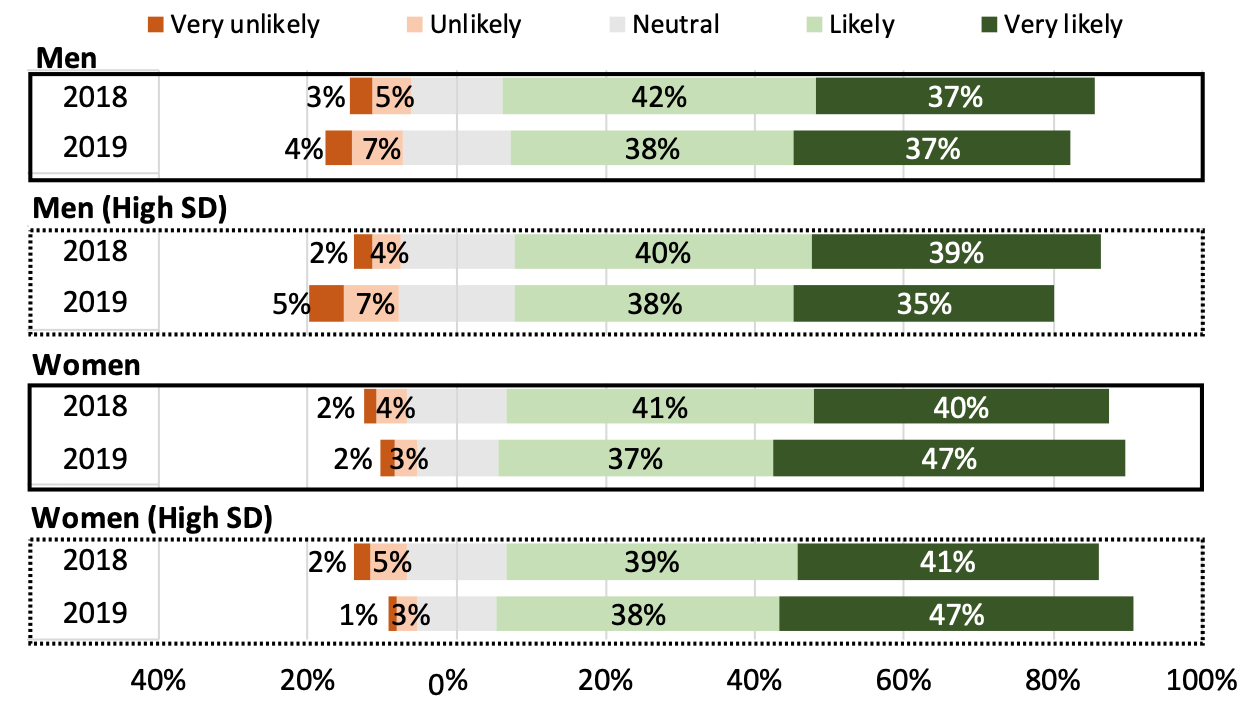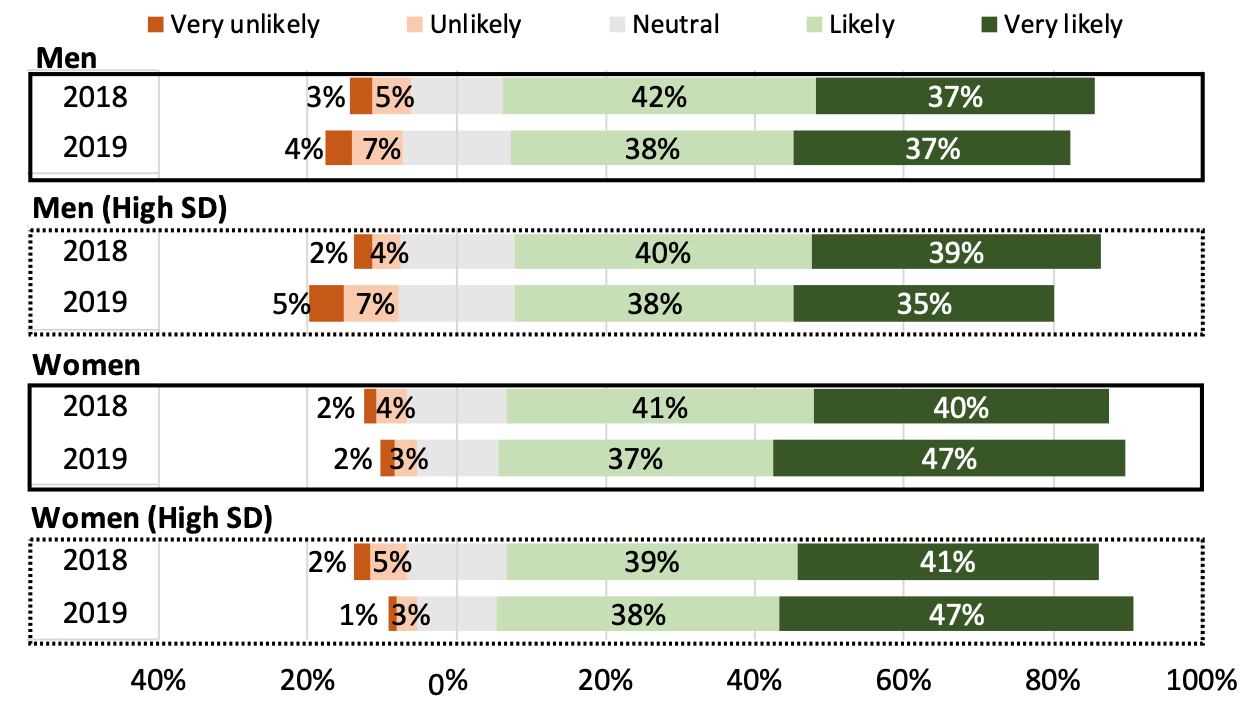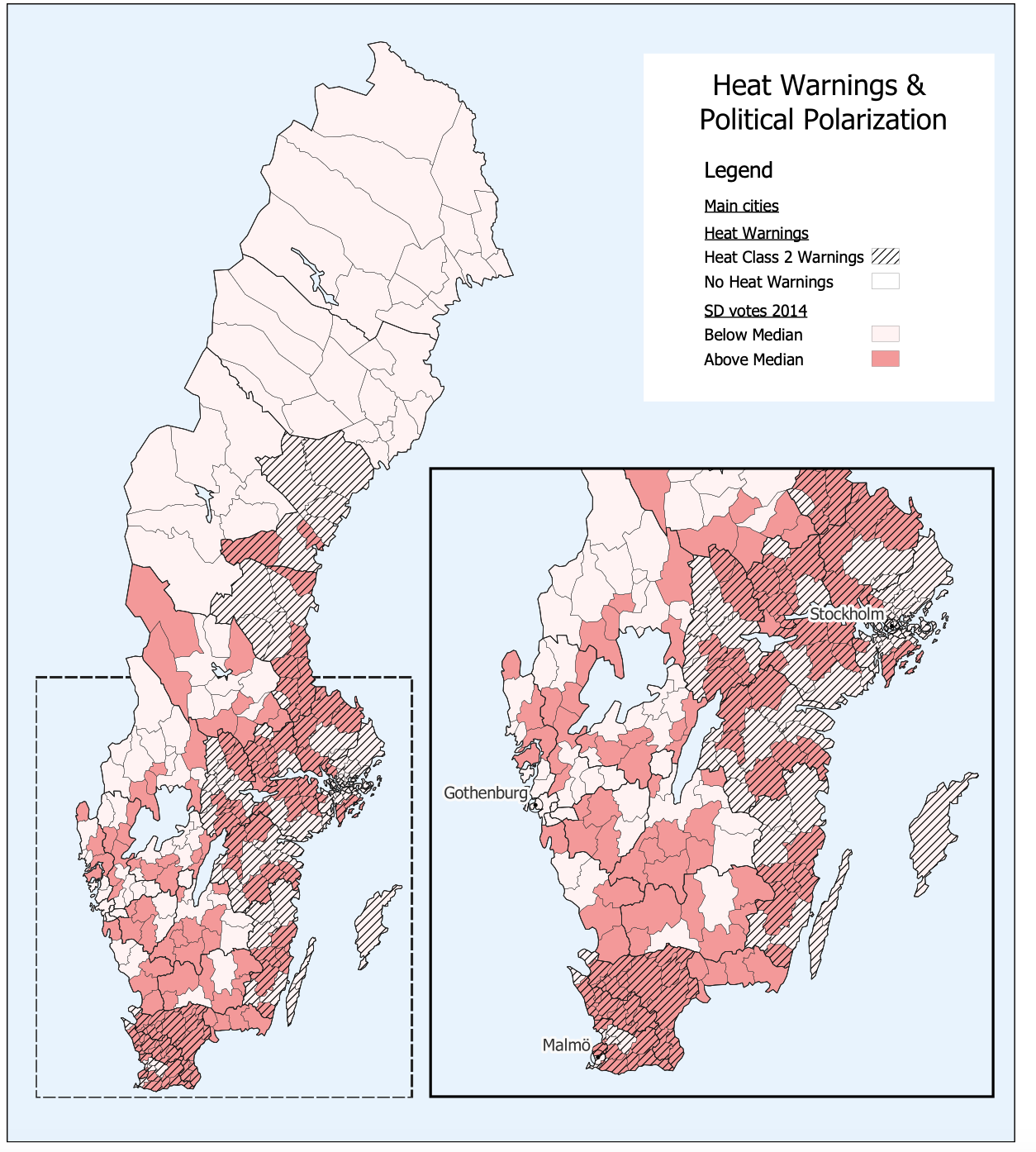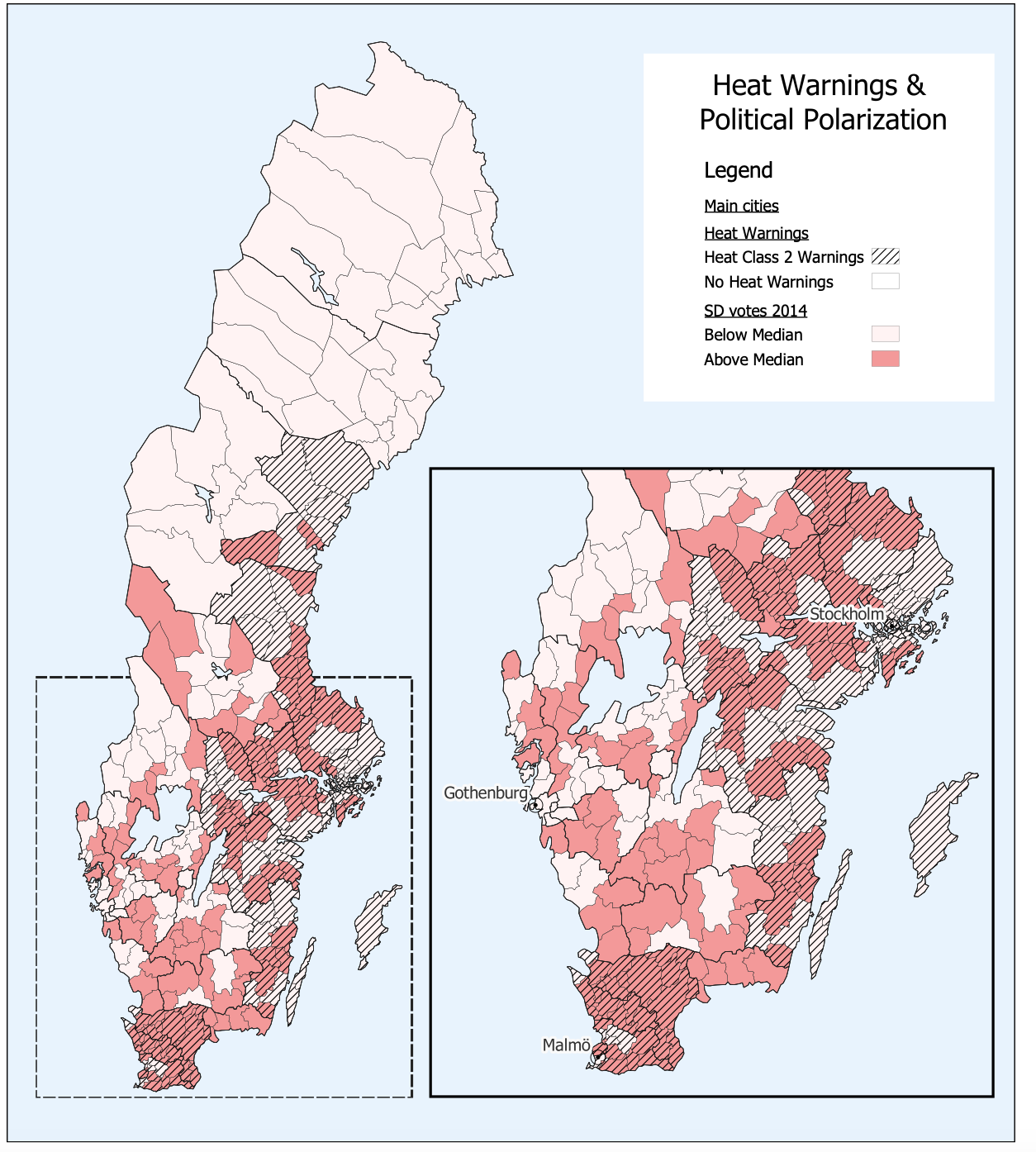Climate change is a topic that is especially prone to political polarisation and ‘asymmetric updating’ – the tendency for people to assign more weight to information that conforms to prior beliefs and less weight to evidence that challenges those beliefs. This column reports on responses from two surveys in Sweden, separated by a heat wave, which revealed that while most people grew more concerned about climate change following the heat wave, men living in areas with a high vote count for the right-wing Swedish Democrat party grew less concerned on average. In general, individuals who became more concerned about climate change tilted their retirement portfolios towards funds with better climate risk scores.
On a variety of complex issues ranging from immigration, climate change, gender identity, to foreign policy, we are confronted with a barrage of seemingly contradictory facts that we must sift through to form an informed opinion about the subject. Economists use the term ‘asymmetric updating’ to capture the idea that in these situations, we generally overweight information that conforms to our prior beliefs about the issue and underweight evidence that challenges those beliefs. 1 Asymmetric updating is widely understood to be an important element in the rise of political polarisation that we see across the globe in many contexts. This polarisation is intimately connected to the rise in right-wing populism in Europe (Stöckl and Rode 2021).
Climate change is a topic that is especially prone to asymmetric updating and political polarisation. Although the pace of climate change may be accelerating quickly, it is in general a slow-moving process; it plays out over decades, not weeks or months. Decisions made by any one individual are unlikely to have any measurable impact on the climate, even large changes can occur with collective action. And at the same time, high-frequency variation in localised weather conditions can create confusion about the general direction of climate change. “If the earth is getting hotter, then why is it so cold outside?” is a common refrain among those falsely equate climate and weather. 2
In our study (Anderson and Robinson 2024), we were interested in understanding how perceptions of climate change impacted households’ willingness to make climate-friendly investments. This is a critical question in terms of understanding how finance and climate change interact. The traditional view is that as more capital flows into climate-friendly investment vehicles, the cost of capital for green investment projects falls, potentially speeding the pace of climate adaptation. Moreover, households’ willingness to make climate-friendly investments reflects how they incorporate climate considerations into the standard risk/return trade-off that is central to long-term retirement savings decisions. And at the same time, climate-friendly investment, and the broader trends towards environmental, social and governance (ESG) investment, have become polarizing issues in much of the world (Masters and Temple-West 2023).
To study these issues, we conducted two large-scale, nationally representative surveys of Swedish households – one in the winter of 2018, the second in the winter of 2019. The surveys measured their beliefs about the importance of climate change and how the beliefs were changing over time. In between the two surveys, during the summer of 2018, Sweden was rocked by record-breaking high temperatures. This heat wave was associated with over 50 different wildfires in Sweden and drew widespread media attention throughout northern Europe.
The analysis we conducted focused on two central questions. How did the heat wave change people’s beliefs about the severity and importance of climate change? And how did it affect people’s willingness to make climate-friendly investment choices?
Even though weather and climate are distinct natural phenomena, the first question is important because extreme weather events have been shown to act as wake-up calls in a number of settings. For example, Greenstone (2019) shows that more people in the US believe in climate change now than did five years ago, citing increasingly harsh weather as the reason for their changing views. Weather-induced preference shocks have been explored in various settings before including car purchases (Busse et al. 2015), real estate prices (Bernstein et al. 2019), stock prices (Choi et al. 2020), and pricing of options (Kruttli et al. 2021).
The answers we found here were surprising. Although the average respondent grew slightly more concerned about climate change between the two surveys, this modest shift in the average masked important differences of opinion. While most people grew more concerned, a sizeable fraction of individuals grew less concerned about climate change after the heat wave.
Leveraging the granularity of Swedish administrative data, we were able to map respondents to their voting precincts (see Figure 2). To study the role that political polarisation played in this divergence of opinion, we measured voter turnout at the precinct level for the Sweden Democrat (SD) party. The Sweden Democrats are a right-wing, populist party in Sweden that has gained significant popularity over the last several elections. They dispute climate change and they stand in vocal opposition to Sweden’s commitments to fight climate change. In addition, party leaders peddle misinformation about the nature, scale, and severity of climate change to support their positions. 3 We compared individuals who lived in areas with high voter turnout for this party to areas with low voter turnout. 4
Respondents in high-SD areas were generally less concerned about climate change and less likely to think it necessary for the government to take action to fight it. While on average, men in our survey who lived closer to areas of extreme weather events grew more concerned about climate change, this effect was reversed among men in high SD areas, who grew less concerned (see Figure 1).
Figure 1 Temperature assessments in 2018 and 2019


Note: This figure display survey responses to the question: “In the next 20 years, how likely is a one Centigrade increase in global temperature”. Responses are collected for the same 2,561 individuals in 2018 and 2019 and fall on a scale ranging from “Very unlikely” to “Very likely”. The results are presented separately for men and women living in high or low SD vote districts.
Next, we asked whether these opinions had any impact on retirement savings behaviour. To study this issue, we linked survey responses to mutual fund holdings in the Swedish pension system, which allows individuals to direct a portion of their pension savings to as many as five distinct mutual funds among several hundred that participate in the government savings system. The system features a web interface that makes it easy for investors to filter potential fund choices on ESG factors and a variety of other negative screens.
In general, individuals who became more concerned about climate change tilted their retirement portfolios towards funds that received better Morningstar climate risk scores. But this effect was concentrated solely in areas with low SD voter turnout. Among respondents living in high SD voter turnout areas, respondents who report being less concerned about climate change downweight fossil fuel exclusion funds in their retirement portfolios.Figure 2 Heat warnings and political polarisation


Note: This map shows voter turnout for the Sweden Democrat party along with the presence of severe heat warnings.
These findings illustrate the fact that political polarisation can shape investment behaviour in capital markets by ordinary households. The results take on additional importance when placed in the broader context of the Swedish retirement system, which went from having almost no fossil fuel exclusion funds among its choices to being dominated by them. As concerns about climate change become increasingly acute, understanding the role of behavioural forces operating at the individual level and how these forces aggregate into market-level outcomes is an important topic for academics, market participants, and policymakers alike.
Source : VOXeu





